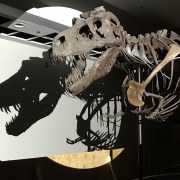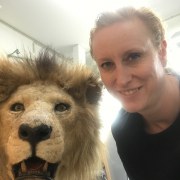Dinosaurs as catalysts for change
Dinosaurs have the power to reach audiences other collections cannot reach – how is this being harnessed as a catalyst for change? Find out how moving dinosaurs, whether within a museum context or on tour, can act as a signal for large-scale strategic shifts and massive transformations in museums.
The Natural History Museum of Denmark is relocating the entire museum and using dinosaurs to make connections with new audiences and ultimately provide a route to understand their audiences in their future new building in a new part of the city. The Field Museum in Chicago has relocated its iconic T-Rex, SUE, to telegraph to visitors the process of transformation during their 125th anniversary year. The Natural History Museum in London has taken its iconic Diplodocus, Dippy, on tour to catalyse its national activity and signal a new brand narrative.
Session speakers
For 20 years SUE the T. rex has been has been the main feature of the great hall of The Field Museum. Over the years SUE has become not only the icon of the museum but of Chicago itself. For our 125th anniversary in 2018-19 we are moving SUE to a dedicated gallery and replacing her in the great hall with a Patigotitan Mayorum-the largest dinosaur in the world. Because of SUE's iconic status the project has received intense scrutiny adding a significant dimension to the exhibit-making process.
Deputy Director, Exhibitions and Visitor Experience
Natural History Museum of Denmark
NHM Denmark is undergoing radical transformation. We are focusing our audiences on our developing mission, and new location in the centre of the city. Dinosaurs are a strategic anchor for the museum’s changing exhibition strategy. The first iteration resulted in a leap from 16,000 to 70,000 visitors a year. Our second iteration is far more ambitious in both scale and innovation. It’s a radical internal change: engaging with “new” visitors, and changing infrastructure and development strategies.
Head of National Public Programmes
The Natural History Museum
NHM, London replaced its iconic Diplodocus, Dippy, with a whale, Hope, that represents its new brand narrative. Dippy is a catalyst for a new UK strategy to engage large and diverse audiences with the natural world and contemporary science. The first tour venue saw annual visitor figures treble in 3 months and social and economic impact on the town. Dippy on Tour has enabled the NHM grow a UK-wide network of museums which shares expertise and develops initiatives to support capacity building.




